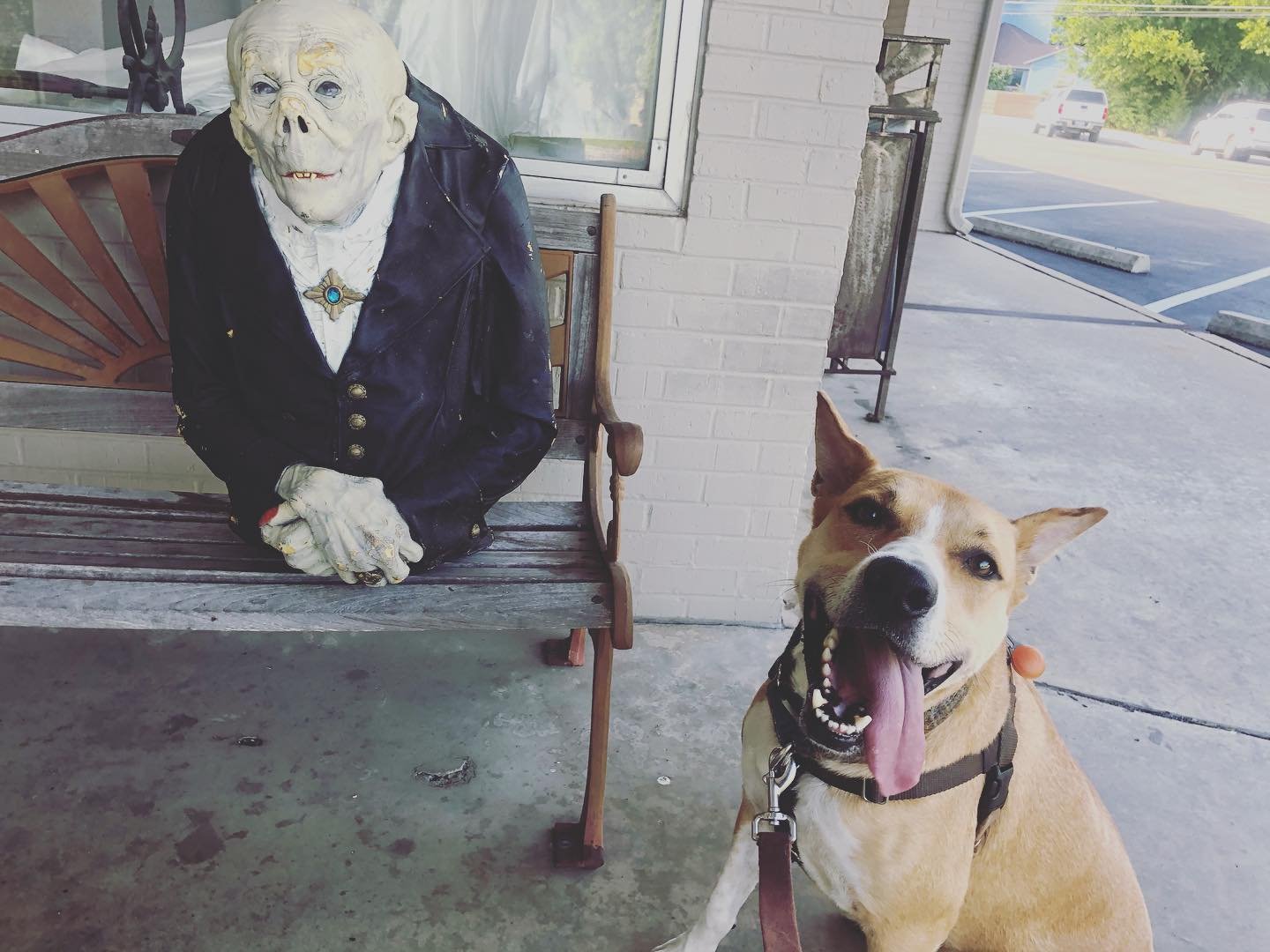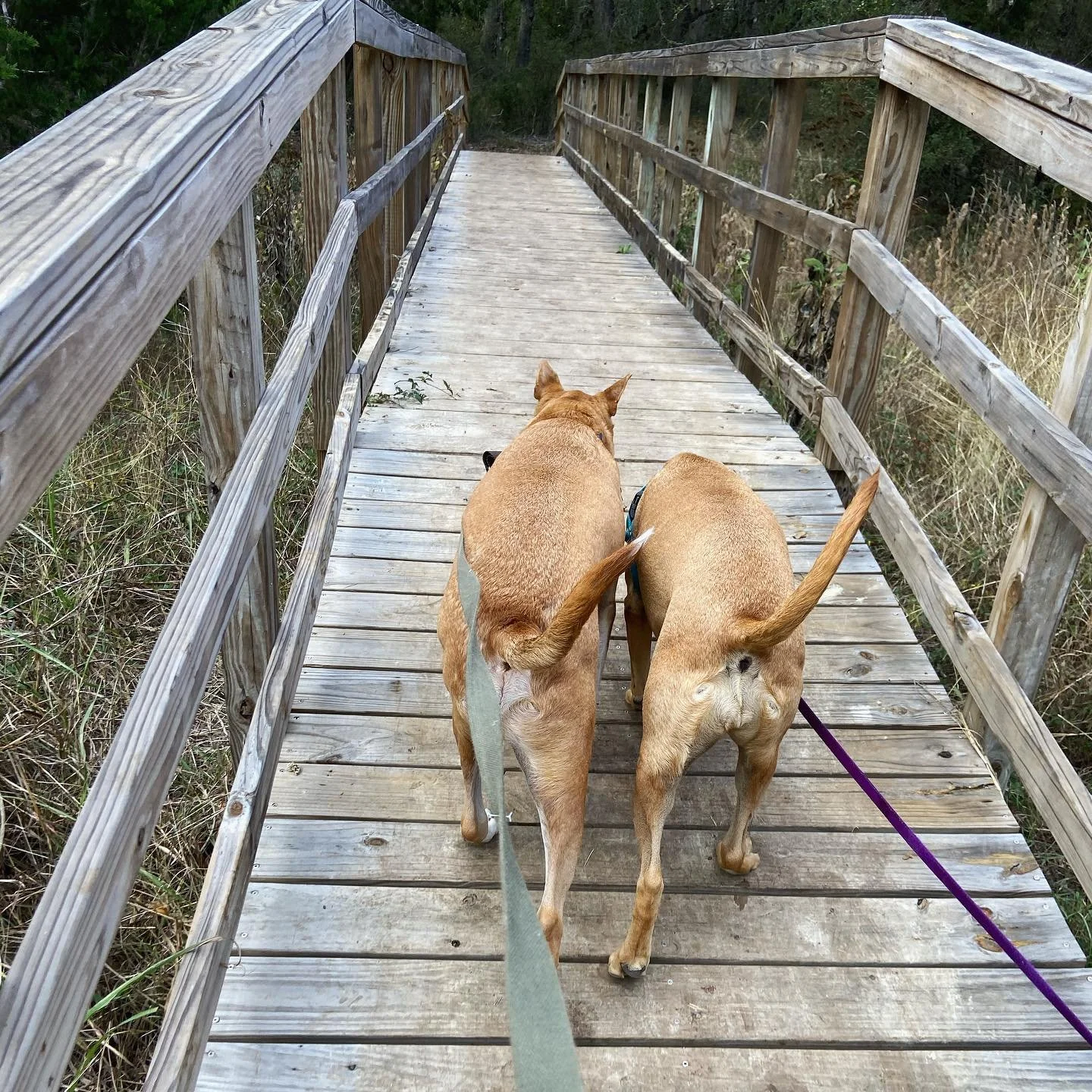The Majority of Dogs are Not “Patio Dogs”
With some exception to this last handful of years, there is quite a lot to love about the direction companion animal culture has moved in recent decades. In many ways, we’ve become kinder, more empathetic, and more driven to ensure the animals in our care are living happy lives. There is still A LOT of misinformation out there and it can be hard for the average dog owner to navigate. But most of the people we meet love their dogs and want to do right by them.
The “patio dog” phenomenon is likely driven in part by some of that positive shift. We love spending time with our dogs and want to bring them with us on social outings!
But it’s also part of the normalization of unrealistic expectations put on dogs by humans and one of the more common examples of situations we put dogs in that aren’t particularly appropriate for the majority of them. If you are reading this thinking that your dog absolutely loves joining you on patios around town, it’s possible that your dog is one of the exceptions. But they’re not the rule.
So why might dogs not love hanging on bar or restaurant patios?
It can be frustrating.
We are asking the dog to be still in a confined space, surrounded by a lot of stimuli, for an extended period of time. For social and inquisitive dogs, not getting to interact with and investigate that environment, especially for long durations of time, can be frustrating.
It can be scary.
For a more fearful or just more introverted dog, just being in an environment saturated with humans, other dogs, and unfamiliar sights and sounds can be overwhelming. We then add restricted movement, unknown humans like servers or those who think the dog is oh so cute approaching, erratic or boisterous behavior from people who have been drinking, and any number of other unfamiliar experiences and we are often pushing a dog far past their threshold.
They’re not often supported the way we might think they are.
We may be packing puzzle toys and treats but we’re often going to these patios to socialize with other humans or to work. Our dogs are secondary to the activity and we’re mostly hoping they’ll hang out quietly near us while we do other things. We can certainly train them to do that. But if the dog doesn’t enjoy this time and it’s hard work for them to maintain the behavior we’re asking for, is that an appropriate training goal?
Not all patios are created equal. If you’re going to do this, we recommend choosing a space where there is ample space between seating and you aren’t likely to run into drunk patrons. Make your first few outings about just you and your dog. Practice relaxed behavior in that setting and watch your dog’s body language and behavior. Are they comfortable? Do they seem frustrated or frightened? Are both of you having to work very hard to keep them calm and stationary?
Here’s what we ask: Before bringing your dog along to a patio or to any other activity, ask yourself whether it’s something they genuinely enjoy doing. If the answer is yes, pack up the goodies you need to ensure they’re supported and successful and have fun! If it’s not, leave them at home with some independent enrichment and think about what activities they *would* love to do with you for your next outing together.
Let’s normalize normal dog behavior and activities appropriate for the species and the individual.


